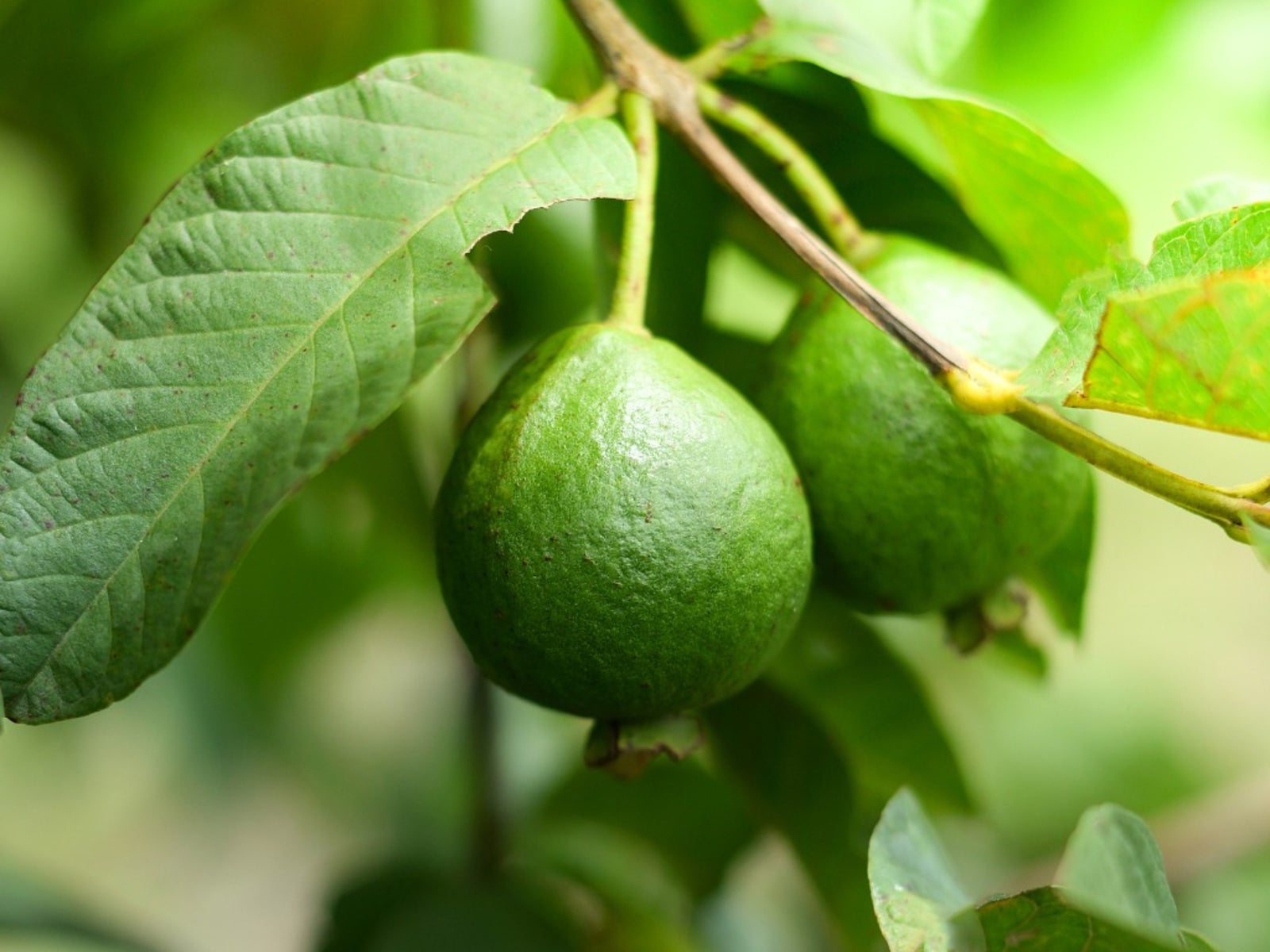Growing Guava In Containers: How To Grow Guava Trees In Pots

Guavas, tropical fruit trees native to Mexico into South America, are such a prized fruit that there are dozens of varieties. If you love this exotic fruit but lack garden space, have no fear. Growing guava in containers is easy. Read on to find out how to grow guava trees in pots and other guava tree container care.
Growing Guava Trees in Containers
There are three different types of guavas, all of which are suited for container grown guava.
- Tropical guavas (Psidium guajava): Tropical guavas are the juiciest of the three with the largest fruit. They are more frost tender than the other two and grow 10 to 15 feet (3-5 m.) in height.
- Strawberry guavas (Psidium lucidum): Strawberry guavas are shrub-like trees with smaller, tarter fruit. They tend to have high yields and attain a slightly smaller height of 12 feet (4 m.) high and wide than tropical guava. They thrive in Sunset zones 18 to 24 and are hardy to 25 degrees F. (-4 C.).
- Pineapple guavas (Feijoa Sellowiana): Pineapple guavas are the most frost tolerant with citrusy fruit. They are hardy down to 15 degrees F. (-9 C.) and grow well in Sunset zones 7, 11 through 24. The trunks of these 15 feet (5 m.) trees contort and twist wonderfully.
All of these can be grown in the ground or in containers. Growing guavas in containers has the added benefit of being able to move them to a sheltered area. While pineapple guavas are the most frost tolerant, they are still a semi-tropical plant that needs protection from heavy frost.
How to Grow Guavas in Pots
Guava does well in a variety of soils but prefer well-draining soil with a pH of between 5 and 7. Plant the tree with a combination of potting soil and organic compost. Select a container that is at least 18 to 24 inches (46-61 cm.) across and the same depth. Be sure the pot has adequate drainage holes. These tough plants are adaptable, making them the perfect fruit tree candidate for guava trees in containers. Select a site for your container grown guava in full sun.
Guava Tree Container Care
Guavas don't need frequent deep watering. During warm weather and growing season, water guavas two to three times per month, deeply. During the winter months, guavas are drought resistant, so water sparingly. Guavas have shallow roots that absorb water and nutrients rapidly. Fertilize them with an organic, granular fertilizer once every three months. Guavas don’t need much pruning, although they are amenable to shaping. Remove any dead or crossing branches and remove any foliage or branches that sprout below the graft union (where the fruiting plant is grafted onto the lower rootstock). Guavas fruit on new growth, so pruning will not adversely affect the fruit set. Take care to protect the tree if temps are likely to drop. Cover the tree with a sheet or tarp to protect it from frost. You can also use a circulating air fan or even spray the tree with water to help insulate it from frost. Stringing the guava with Christmas lights is another way to protect the tree during freezing temperatures. Other than that, these self-fruiting trees are very low maintenance, and you need only wait for the succulent, fragrant guava fruit harvest.
Gardening tips, videos, info and more delivered right to your inbox!
Sign up for the Gardening Know How newsletter today and receive a free copy of our e-book "How to Grow Delicious Tomatoes".

Amy Grant has been gardening for 30 years and writing for 15. A professional chef and caterer, Amy's area of expertise is culinary gardening.
-
 4 Superfast Composting Methods: Turn Waste Into Garden Gold In 30 Days Or Less
4 Superfast Composting Methods: Turn Waste Into Garden Gold In 30 Days Or LessTry the fastest composting methods to turbocharge your pile and transform kitchen scraps and garden waste into finished compost in just a few weeks.
By Mary Ellen Ellis
-
 Best Spider Plant Soil – Complete Soil Guide And Expert Tips For Keeping Plants Happy
Best Spider Plant Soil – Complete Soil Guide And Expert Tips For Keeping Plants HappySpider plants are fun and easy plants to grow, but what is the best soil for a spider plant? Selecting the right soil is important so they can thrive.
By Bonnie L. Grant